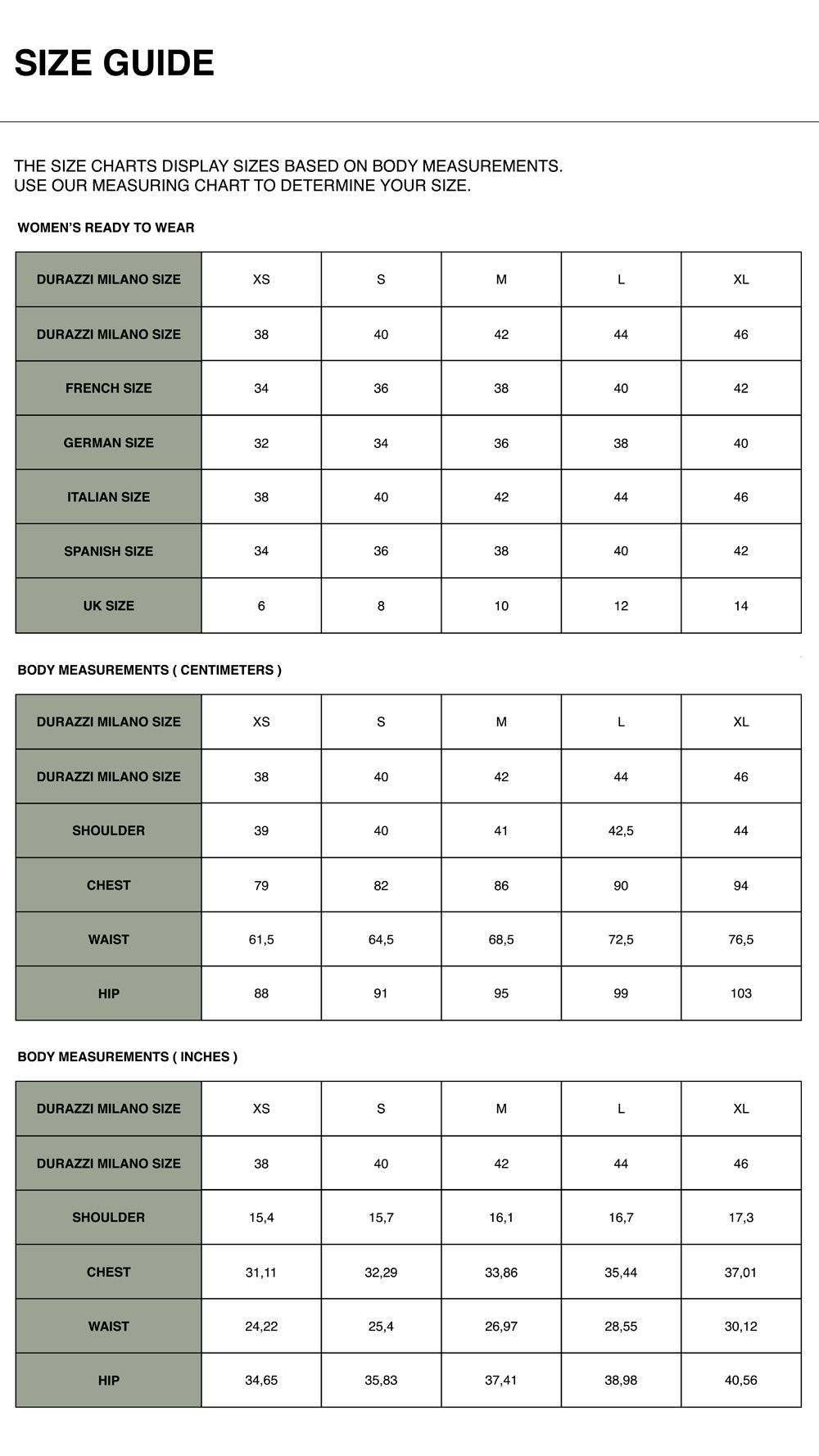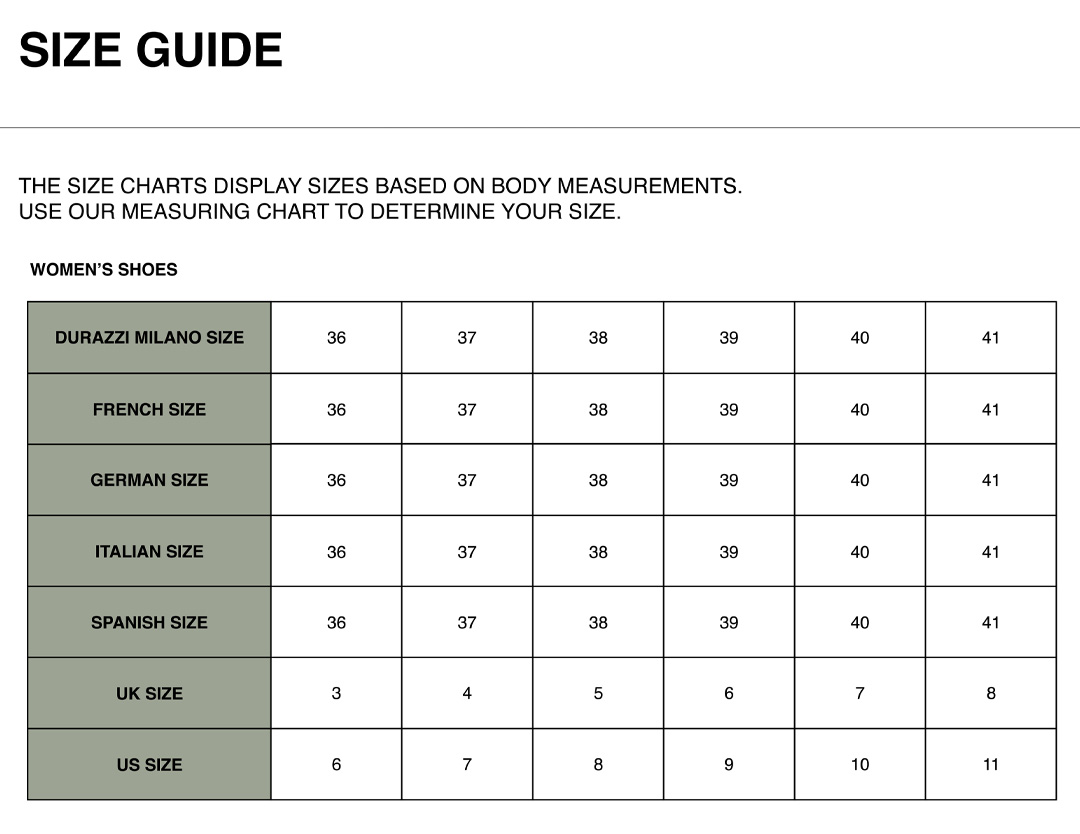SPRING SUMMER 24 COLLECTION
MONUMENT TO HERSELF
The style of Ilenia Durazzi for DURAZZI MILANO flows together in a continuum at the intersection between various types of creative expression and rigorous elegance, between a reflection on the female condition and the wish to reconnect to natural environments that we long for, which are abstract but nevertheless so vivid that they appear like a seductive dystopia.
Her approach to work keeps her faithful to her obsessions – a fascination with horses, disciplined tailoring, rationalist architecture, contemporary art, carefully-considered restraint, empowerment of women through fashion.
It moves forward by evolution rather than revolution, in the conviction that eliminating what is superfluous can heighten the meaning of what remains.
For the spring-summer 2024 collection “we have, as always, started from researching materials, one of the foundations of the identity of my brand. Each season, my craftspeople and I come up with creations that show a strong link with tradition and with details that instil a contemporary look.” This time the dialogue with today involves a performance in one of Milan’s most famous contemporary art galleries, to bring out in an orderly way (“I find that, at the sea, the horizon is in itself a geometric design”) the throbbing power of a memory that enlivens the past and transforms it into an impassioned present. An experience with synaesthesia to give form to something that is immaterial. A multi-sensory experience to place the untamed spirit of unpolluted nature in a detached and decontextualised receptacle, as if it were reproduced in a scientific laboratory: it is an allegory of the emotional heritage that every one of us recreates in their deepest beings, where they accumulate memories, recollections and romantic devices. As we go in, hearing and smell are the first senses to be stimulated: robotic sounds produced by speakers with cables that look like roots, the reconstruction of disturbing “in vitro” plants, while the air carries a scent that reproduces the olfactory notes of a forest where an untethered herd of wild horses has just passed. The tracks of their hooves are pressed into ten tall and irregular clumps of fresh clay, on which model-performers climb as if on imperfect stands that seem to be hand packed, like a piece of Land Art that has been brought into the closed, neutral spaces of an urban setting. They thus turn into living statues, organic and ephemeral monuments – and a homage to artists like Piero Manzoni and Joseph Beuys – true expressions of a form of fashion that designs structures for the body to protect it, and bring out the best in it. They wear suits with clean-cut designs, where the suggestion of precise sailor suits traces out a silhouette that is both safe and powerful, and which embraces the precision of minimalism and the sober charm of the uniform. But each one of them is different, and embodies the possibility of dressing like a declaration of identity. They represent strength, determination and the composure of everybody who has challenged social conventions to sign on for daring adventures, and also a criticism of the lack of female statues, thus calling upon us to reflect on the urgency of growing the narrative of history about the heroines of vital events, and yet who are never celebrated: female artists, scientists, politicians, intellectuals who have played a central role in daring to challenge the status quo, redefining gender roles and showcasing the power of self-expression. Once up on the unstable pedestals, the performers go through a metamorphosis: each of them declaims, as if they were personal intentions or wishes, sentences principles, aphorisms, monologues from notable women, both real and imagined: from the artists Laurie Anderson, Ana Mendieta and Georgia O’Keeffe to the poet and activist Maya Angelou – the first Afro-American woman to write a best-selling collection of essays – to Marion, the angelic star of Wings of Desire who is played by Solveig Dommartin in the Wim Wenders film.
The inspiration goes back to the names of 999 women written in gold on the Heritage Floor that underlies The Dinner Party, the installation work by the artist Judy Chicago in the 1970s, and which shows an imposing ceremonial banquet for 39 woman who have made contributions to the evolution of history. The colour palette owes much to the earthy and underworld tones of the Siluetas project by Ana Mendieta. Between 1973 and 1980 she literally immersed herself in rural, marine or cave environments, leaving fleeting and powerful marks of the impression made by her body, which is changed over time by elements such as fire and water: the colours reflect the infinite and multi-thematic gradations of blue, red, white and black. Leather is now a basic part of the vocabulary used by DURAZZI MILANO, although it is of course a language that is continually evolving. Hints as to how memory can be incorporated in fashion: the abstraction of handkerchiefs that were once embroidered with words of love from mothers and girlfriends to be given to men in the navy – once they have been copied, they invent dancing geometric frills for dresses and skirts. Primary shapes – triangles, rectangles, squares – play on the concept of transformation: exaggerated for suits that are over-sized, or made miniature for mercurial capes to take on and off, inspired by raincoats and riding parkas, made in twin-tone technical fabric that is waterproof and bonded. There is a focus on suits for women: the front slits of the tailored jacket have a graceful twist, while the oversize trousers with a maxi side crease allude to day- time smoking jackets, in wool that is so light that it could almost be gauze. The motif of folds blocked out by hand-sewn metal buttons is the leitmotiv that embraces shape, function and passion. There is room for calculated error that changes what is normal into a new emblem, a mistake that normalising behaviour would reject, it is non-standardisation which has a fun side to it. For example: hybridisation of boots and sandals, between ballet flats and gaiters to produce footwear that flirts with a refined fetish look that is brought out by trousers in tejus paint with relief designs. Accessories further amplify the variety of female expressions.
As well as the Cavalry Bag, the Swing Bag and the Besace in which the logo/fastener represents both the detail of a bridle and also a horizontal “D”, there is also a new bag inspired by fishing traps, which – with the addition of concentric circles – goes from being completely flat to becoming vertical. With the D-RING logo there are also the new waist bags that add a chic tailored touch both in the polished version or covered with a dense décor of leather tassels and weaves. The work on fabrics – cut with varying-size holes – gets weaved in again with the abstract nature of lace and also animal prints: the animal cut out is another one of DURAZZI MILANO’s distinctive looks, as are the Sella asymmetric kilts. In the concept of life as Gesamtkunstwerk – a complete work of art – there is also room for the tactile element of heavier fabrics such as canvas, versatile and high-performance materials, technical jerseys and leather, including in mixes. Other fibres, such as jacquard raffia, combine classic working with a futuristic viewpoint. Strength, grace and creativity come together to redefine style as a visible statement of empowerment in the miniskirts topped by biker jackets, in the prints of earth elements that reproduce the prints in the clay. These are objects issued from friendly yet persistent engineering, one that has been developed to meet a specific design as well as multiple expressions of being, in the conviction that fashion has an ability to encourage conversations about power, sexuality, gender and even cultural, geographic and romantic identity.



























